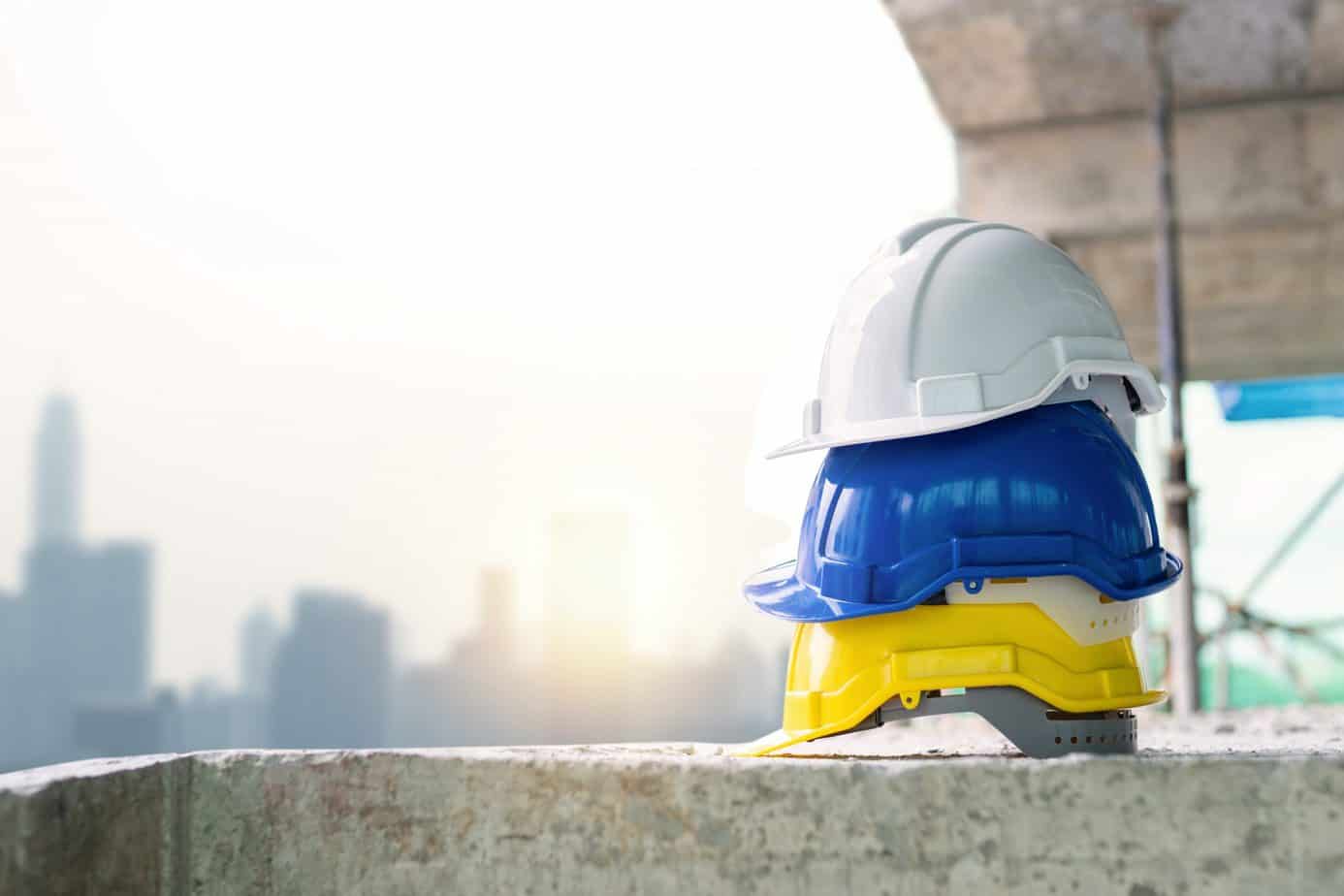When engineers are on the job site, they need to wear construction safety gear. At a minimum, they need a safety vest, an engineer hard hat, safety glasses, and safety shoes with a solid grip. The shirts should be high visibility, and they should have sleeves. They should also wear long pants to protect their legs. Take a look at some of the best construction safety gear for engineers.
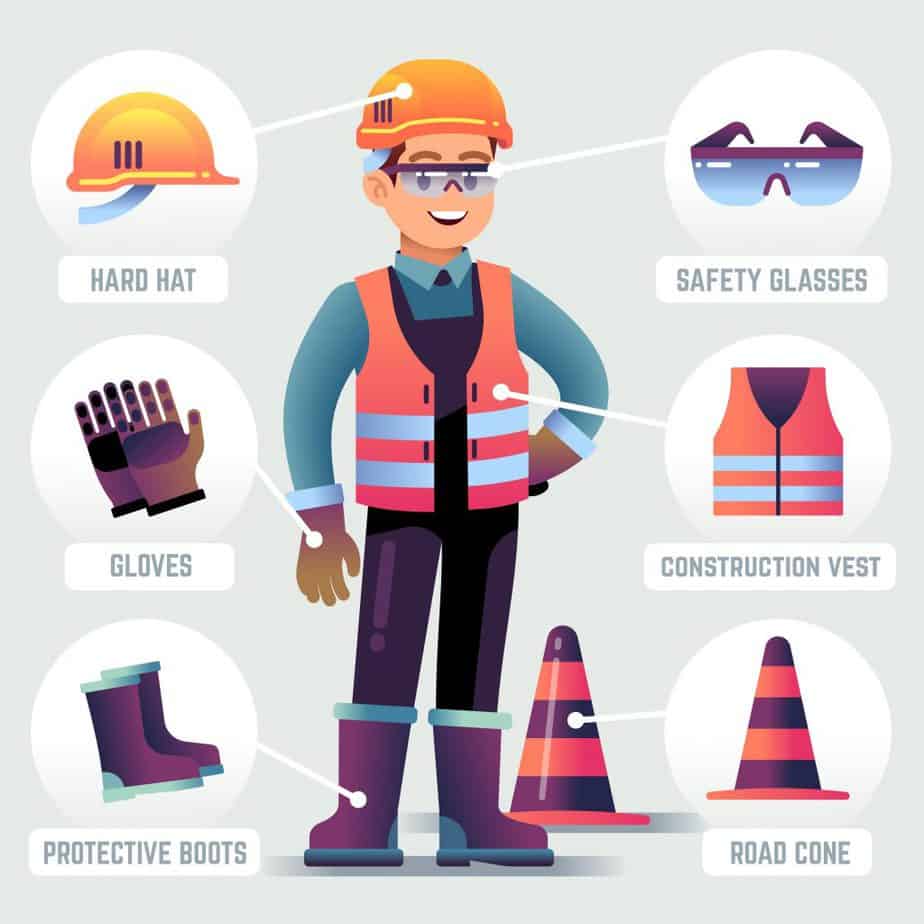
CONSTRUCTION SAFETY GEAR MUST-HAVES
Construction is a dangerous profession. Injuries and fatalities are common in this industry. The Occupational Safety and Health Administration (OSHA) is the one to enforce safety standards in construction sites. They provide guidelines for safety equipment, safety practices, record keeping, and reporting of injuries or fatalities.
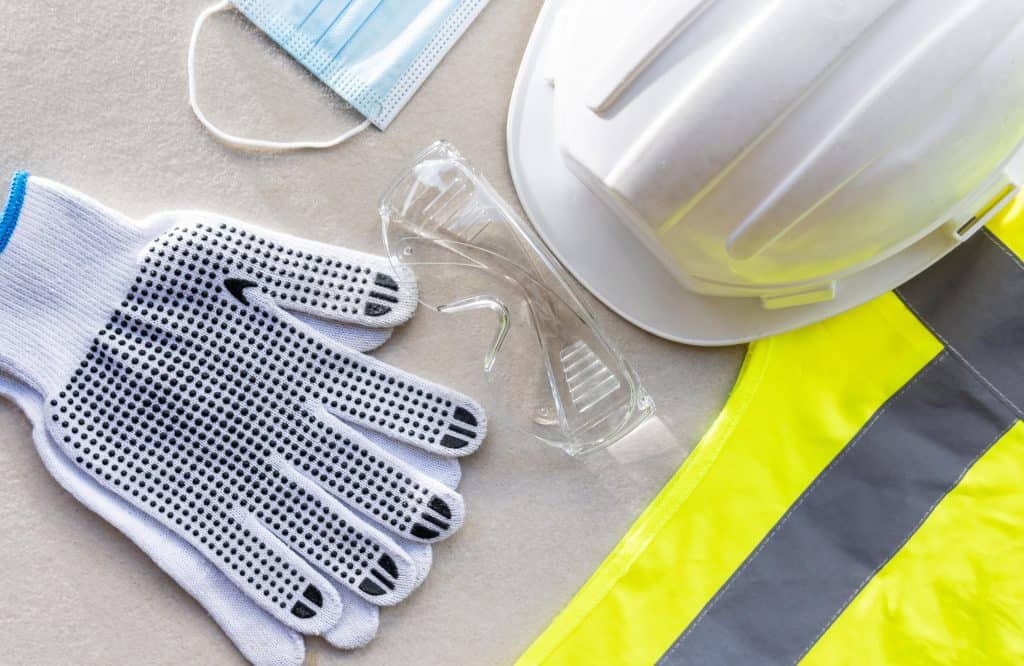
The OSHA requirements for construction workers, engineers included, are:
- Personal protective equipment (PPE) such as
- hard hats
- safety glasses or goggles
- face shields or masks when exposure to hazards cannot be eliminated by other means
- hearing protection
- safety vest
- gloves
- Respirators for protection against breathing hazards
- Safety shoes with steel toe caps
- Protective clothing such as:
- Coveralls
- Aprons
- Gloves
What are the Benefits of Using Safety Gears?
Safety gear, such as hard hats, safety glasses, earplugs, and gloves, can provide a wide range of benefits. These include:
- Preventing injury
- Protecting from chemicals or other hazards in the workplace
- Keeping us safe from infection or disease
- Protecting our eyesight and hearing
SAFETY VEST FACTS
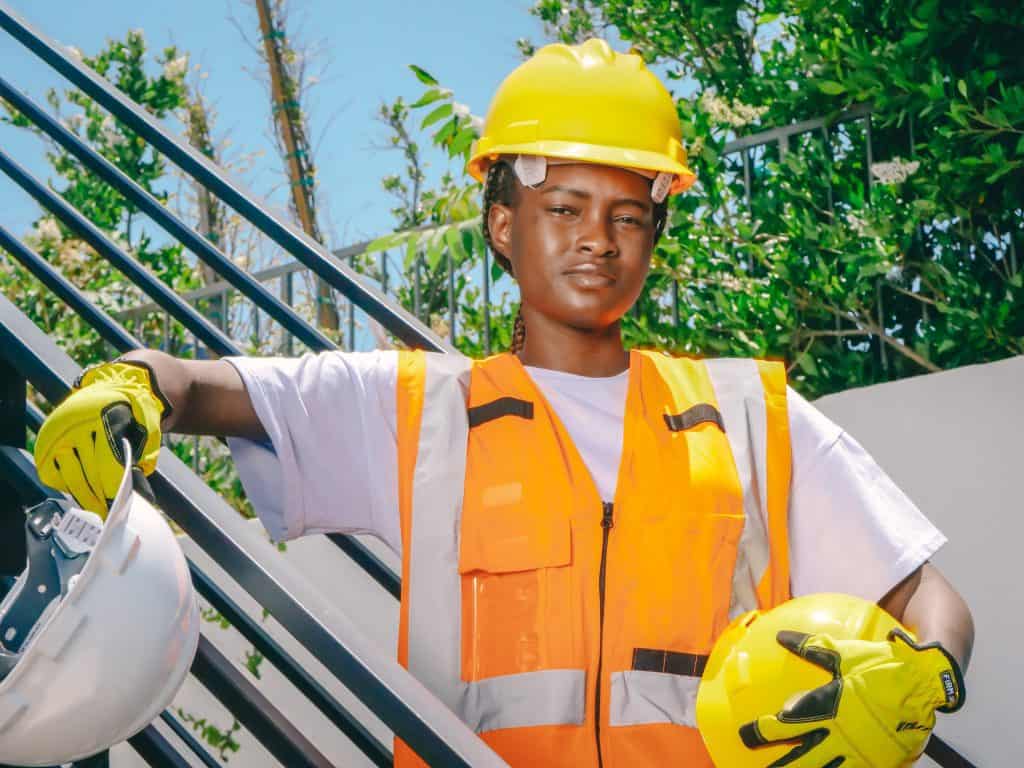
What is a SAFETY VEST and Why Do You Need It?
A safety vest is a garment worn by people to indicate that they are in a position of authority and should not be obstructed.
The purpose of the safety vest is to protect the wearer from being hit by traffic. It also alerts other road users that they should not drive into or near the wearer.
These vests are often brightly colored with reflective markings on the front to increase their visibility.
What Garments Meet the Specified High Visibility Requirements?
The ANSI/ISEA 107 and 207 standards are created to ensure that high visibility garments are as safe as possible. These standards provide explicit guidelines for the construction, labeling, and performance of apparel used in traffic control, industrial areas, and other locations where visibility is a factor.
The Federal Highway Administration (FHWA) Manual on Uniforms and Apparel for Traffic Control Personnel requires Class 2 or 3 ANSI/ISEA 107 garments to be worn while on or near roadways. These garments must be fluorescent orange, visible from a distance of between 600 and 650 feet in light conditions.
What is ANSI 107?
The ANSI/ISEAA 107 is a standard for safety apparel. The standard requires reflective material and high-vis clothing so that workers can be easily seen in the dark. This standard is most commonly used by companies that provide high-visibility apparel to their workers who need to work in low-light conditions or in dark environments.
What are the Various ANSI Classes?
The classes are defined by the minimum amount of background and retro-reflective material, the configuration of the retro-reflective material, and other technical garment design requirements. A wearer shall select which class they wear based on their own risk assessment.
- ANSI Type O, Class 1 – Performance Class 1 is the minimum class of clothing for high-visibility materials, which means it’s only appropriate for off-road environments. This type of clothing is often worn by workers in the construction industry and transportation industry.
- ANSI Type R or P, Class 2 – Performance class 2 is the minimum protection you need if you work around rights-of ways or temporary traffic control areas. The garment will have additional amounts of high visibility materials that help define the human form in order to stand out more against the background.
- ANSI Type R or P, Class 3 – Performance Class 3 is designed so that wearers are visible to others, even in chall enging backgrounds, or when moving. Reflective materials and performance-enhancing materials are placed on the sleeves and pant legs.
- ANSI Class E – High visibility garments that don’t meet the requirements of compliance when worn alone, but when combined with a Class 2 or Class 3 item, their overall classification becomes Class 3.
ENGINEER HARD HAT FACTS
A hard hat is a type of protective helmet. It is designed to protect the head from falling objects, contact with electrical lines, and impact from heavy machinery.
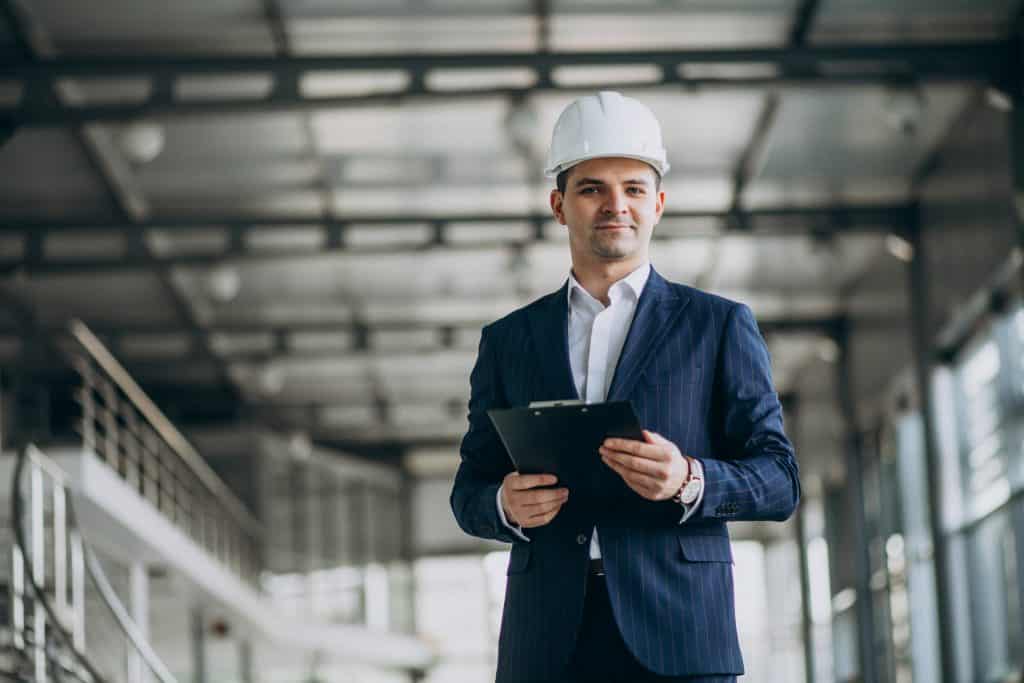
A hard hat should be worn by people who are in areas where there are hazards that may fall on their heads or they may come into contact with electrical lines. They should also be worn by people who work in areas where there is heavy machinery or other dangers that could cause injury to the head. Engineer hard hat is not for engineers only but for all people working or visiting construction areas.
Is There a Standard or Regulations on Hard Hats?
There are no specific regulations on hard hats. However, there are some standards set by the National Institute of Occupational Safety and Health (NIOSH) for helmets to be considered as hard hats. For example, the helmet should not allow more than 200 pounds of impact force when dropped from a height of four feet (1.2 meters).
Is There a Purpose Behind Hard Hat Colors?
There are different colors for different jobs. The main categories of colors you’ll find are white, blue, yellow, and green. White is used in construction and mining jobs to signify a “foreman” or worker in charge of a particular area.
Blue is most commonly used to signify people who work with water or sewage systems, such as plumbers and pipefitters. Yellow signifies electricians and their apprentices.
SAFETY GLASSES FACTS
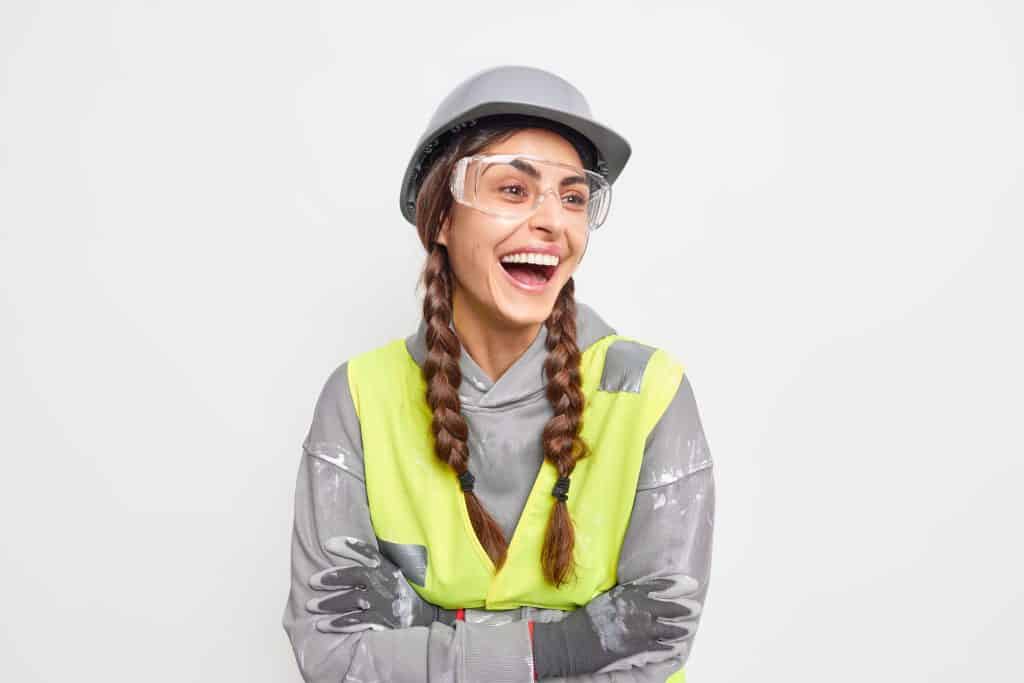
Safety glasses are an eye-protective device that is worn over the eyes to protect them from injury. They are often used in industrial settings and laboratories where there is a risk of particles or chemicals causing injury to the eyes.
Safety glasses come with side shields, which can prevent objects from hitting the eyes and causing damage. They also provide protection against ultraviolet radiation, so they are an essential part of outdoor gear for construction workers and engineers in a worksite.
Who Regulates Safety Glasses?
The Occupational Safety and Health Administration (OSHA) recommends the use of protective eyewear when working in an environment where there is a risk of eye injury from flying particles, or from harmful visible or invisible radiation.
The set of rules for selecting the face and eye protection that complies with OSHA’s eye and face protection standard are found under 29 CFR 1910.133
How to Pick OSHA Approved Safety Glasses
- Eye protection needs to be tailored to the material it’s meant to protect the user from
- All PPE has to be marked by the ANSI and the manufacturer should also certify that it meets those standards
Construction workers are at risk of developing hearing loss, tinnitus, and other ear-related diseases. The main reason for this is the noise they are exposed to on a daily basis.
Hearing protection in construction is important because construction work involves loud noises that can damage your hearing. The most common type of hearing protection used by construction workers is earplugs. They are inserted into the ear canal and protect the eardrum from intense sounds.
Construction work also involves heavy machinery, which makes it necessary to wear earmuffs or helmets with built-in hearing protection. There are two types of helmets: hard hats and bump caps, which have foam inserts inside them to protect your ears against noise exposure.
EAR PROTECTION FACTS
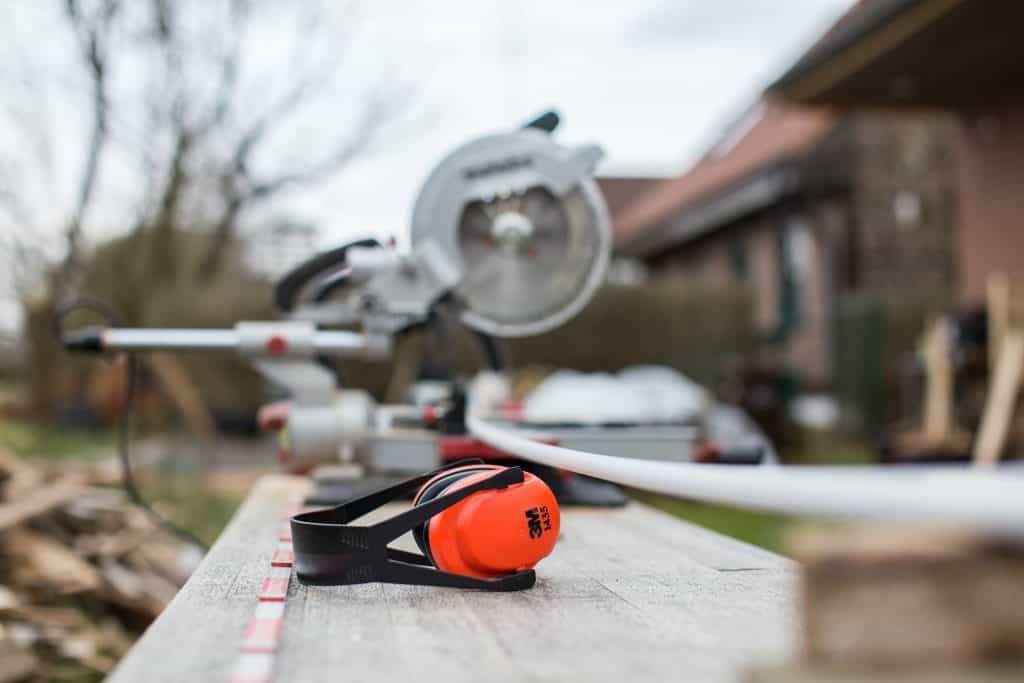
What are OSHA Requirements for Ear Protection?
OSHA requires that employees wear hearing protection when exposed to noise levels in excess of 85 decibels.
- The OSHA requires employers to provide employees with hearing protection devices that have an NRR rating of at least 25 dB.
- They also require employers to provide employees with training on how to properly use the hearing protection device.
How to Pick an OSHA Approved Ear Protection
It is important to have ear protection when you are at work. The OSHA has rules about how to select the right type of ear protection for your workplace.
- The first step is to identify the hazards that might affect your hearing. For example, if you work in an environment with loud machinery, you should wear earplugs or earmuffs.
- If there are no hazards in your workplace, then you can either wear earplugs or nothing at all.
CONSTRUCTION SAFETY GEARS | ENGINEER RECOMMENDED
Safety products are a must on construction sites. They are especially important when you are working with heavy machinery, high-voltage electricity, dangerous chemicals or simply visiting around an active construction area.
There are many different types of safety PPE available, but the most important thing is to make sure that you have the right safety gear for your job.
1. Safety Vest: KwikSafety 10 Pocket Safety Vest

It is important to wear a safety vest on the construction site because it helps people see you. Maintaining visibility is much easier when you have reflective stripes on the vest, and you need to choose one that is approved by the safety international standards.
This engineer safety vest stands out with its bright color and camo pattern. Not only is it one of the best-rated safety vests, but it has 10 pockets for convenience. It has three large pockets that are expandable in front, two hidden side pockets, another two front pockets, and one interior pocket. It is lightweight, and it is reflective for added safety.
It is ANSI-compliant, and it is the ideal option for an engineer who wants to stand out. The 360-degree reflective strips make sure that the worker is seen, and the vest is made with polyester fabric with breathable back side panels. It is a Class 2 safety vest.
2. Safety Eyewear: 3M Safety Glasses
It is also important to make sure that you wear safety eyewear on the site. This protects your eyes and your face from any hazards. If you walk past machine welders, bar benders, and other areas where people are working with equipment, you are at risk of getting metal or wood in your eyes. Safety glasses prevent this from happening.

This set of engineer safety glasses is a great option. They meet ANSI requirements, and the lenses are anti-scratch and anti-fog. They also have protective shields that wrap around the sides of your head. They are clear, so they will not block any part of your view. They are lightweight and comfortable, so you will never hesitate to wear them. They are made of thermoplastic polyurethane, and they have polycarbonate lenses.
3. Hard Hats: Pyramex Ridgeline Full Brim Hard Hat
When you are on construction sites, there is a chance of head injury from debris falling or any kind of accident. It is important for anyone on site to wear a hard hat the entire time that they are on the site. There are guidelines that the hard hat must meet to be safe, which are outlined by the OSHA or ANSI. in general, a safety officer will examine the hard hat to make sure that it is approved for use.

This is a very reliable hard hat that is made with strong and durable construction that is still lightweight. It is made with ABS material, which is ultra-light. This makes it easy to wear as long as you are on the construction site. In addition, it offers electrical protection and is a low-profile design. The brim prevents the glare of the sun from interfering in your vision.
It has a fit that is adjustable and customizable. It has a four-way harness that you can adjust in different directions, including the back, the front, down, and up. This ensures a safe and protective fit. It has a padded rear suspension that helps it stay comfortable. You can’t go wrong with this hat.
4. Ear Protection: Professional Safety Ear Muffs by Decibel Defense
Job sites can be very noisy, and the noise can damage your ears. If you are a civil engineer, you need to protect your ears. They come as earmuffs or as earplugs, and you can choose the one you need. In-ear models will protect your ears from any loud sounds that could damage your ears.

This set of protective ear muffs is aptly named, as they block up to 37 decibels of noise. They will protect any ears from loud noises, and they have large covers to cup the entire ear. They are a great option on job sites. They are comfortable, and they are rated for OSHA regulations. If you are looking for large ear muff-style hearing protection, this is a great option.
5. Ear Protection (in-Ear): Luiswell Reusable Silicone Ear Plugs
For engineers who want in-ear protection, these earplugs are made of reusable silicon. They are attached to cords so that you can keep them around your neck when you aren’t using them.

They can reduce up to 26 decibels of noise, and they are a lot more durable than foam. You can wash them between uses, and they are waterproof. They are comfortable, and they do a great job. They come with a carrying case so that you won’t lose them.
6. Safety Shoes: Timberland Pro Men’s Powertrain Construction Shoe
Any time that you enter a construction site, you should have safety shoes on. They will protect your feet from hazards, and they will help you avoid slipping and falling. There are safety shoes with and without steel toes, and this option prevents nails from puncturing the shoes and injuring your feet.

These safety shoes are 100% nylon, and they have a synthetic rubber sole. They have athletic styling to give them a modern look. They have breathable mesh linings, and they offer electrical hazard protection. They also use anti-fatigue technology for the best in protection and comfort. They are well built by a trusted brand, and they are designed to be rugged and lightweight at the same time.
7. Hand Protection: Ironclad Tactical Operator Pro Glove
When you are on the job site, you may have to handle rough or sharp materials. You need hand protection in the form of safety gloves. There are different types of gloves for people who handle toxic materials versus those who handle sharp objects, and an engineer just needs general protection.

This set of gloves is made of neoprene, and they have a feature on the knuckle that protects hands from impact and abrasions. They also have a sweat management feature that allows you to wipe your brow if necessary. They have a hook-and-loop closure that allows you to get a secure fit. They are a great option to keep your hands safe on the site.
8. Safety Belt/Safety Harness: KwikSafety Thunder 3D Ring Safety Harness
A safety belt or safety harness is important for anyone who is going up to heights above two meters on a construction site. This helps to prevent accidental falls. The harness needs to be strong enough to hold the weight of the person, and it should be made of nylon that is at least a centimeter thick.

This harness is durable and heavy-duty, and it exceeds the ANSI standards. It is fluorescent yellow so that it can double as a safety vest, and it is made of durable and synthetic material. It works with any fall protection lanyard, and it can ensure safety in the event of a fall.
This harness has a dorsal ring on the back, and the load-bearing straps are made from a non-recycled synthetic material that is water repellant. They have superior stitching and are resistant to age, abrasion, heat, and more. There are also three pass-through buckles on the hips and chest.
9. Respiratory Protection: Full Face Respirator
Respiratory protection is also important on job sites. It protects you from sprays, dust, fumes, and other particles while you are on the site. It is more important for some sites than others, and it is required by OSHA in some circumstances. Certain materials can make you sick if you inhale them, and others will show their effects years later.
This one is a three-dimensional design with a sealing edge made of a high-quality silicone mixture material. It will fit the face well, and it is comfortable. It fits most head sizes, and it is reusable. It has a hidden exhale vent and an efficient dual filter. It also has circulating systems that block most organic vapors, gasses, pollen, and particles.

It comes with five sets of filter cotton so that you can use it a few times before you have to buy replacements. It is important to change out the filtering part after each use. The package includes a full-face cover, two filter boxes, ten cotton filters, two plastic covers, and a black storage bag.
SAFETY TAKEAWAYS
When a civil engineer goes on the job site, it is important to have the right safety equipment. Construction sites are dangerous, and there are many hazards if your body isn’t protected. You need to wear a hard hat, safety shoes, a safety vest, and safety goggles at a minimum. You will want gloves and a safety belt if you plan to climb on ladders or inspect roofs. Respiratory protection is important if there is any chance of breathing in particles or gasses. Make sure that you have the PPE you need to be safe when you are on site.
